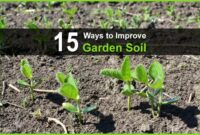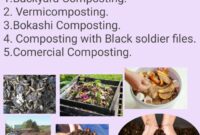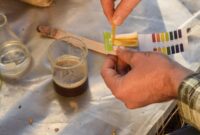Fertilizer for blooming plants sets the stage for this enthralling narrative, offering readers a glimpse into a story that is rich in detail and brimming with originality from the outset. Exploring the world of fertilizers tailored for blooming plants unveils a treasure trove of knowledge waiting to be discovered.
Delving deeper into the different types of fertilizers, essential nutrients, application methods, and optimal timing unveils a roadmap to cultivating vibrant and flourishing blooming plants that captivate the senses.
Types of fertilizers for blooming plants

When it comes to fertilizing blooming plants, there are various types of fertilizers available in the market. Understanding the different types and their benefits can help you choose the best option for your plants.
Organic fertilizers
Organic fertilizers are derived from natural sources such as compost, manure, and bone meal. They release nutrients slowly, providing a steady supply of essential elements for blooming plants. Examples of organic fertilizers ideal for enhancing blooming include fish emulsion, seaweed extract, and worm castings. These fertilizers not only nourish the plants but also improve soil structure and promote beneficial microorganisms. However, organic fertilizers may take longer to show results compared to synthetic fertilizers.
Synthetic fertilizers
Synthetic fertilizers are manufactured chemical compounds designed to deliver specific nutrients to plants. They are fast-acting and can provide an immediate boost to blooming plants. Examples of synthetic fertilizers suitable for enhancing blooming include water-soluble fertilizers like 10-10-10 or 20-20-20. These fertilizers can be easily absorbed by plants and deliver nutrients quickly. However, synthetic fertilizers may leach from the soil faster and can cause nutrient imbalances if not used correctly.
Overall, choosing the right fertilizer for blooming plants depends on your specific needs and preferences. Organic fertilizers offer long-term benefits and improve soil health, while synthetic fertilizers provide a quick nutrient boost. It’s essential to consider factors such as plant type, soil condition, and environmental impact when selecting the appropriate fertilizer for your blooming plants.
Nutrient requirements for blooming plants

When it comes to blooming plants, ensuring they receive the right balance of nutrients is essential for healthy growth and vibrant flowers. Let’s delve into the key nutrients needed to promote flowering and overall plant health.
Essential Nutrients for Blooming Plants, Fertilizer for blooming plants
Blooming plants require a variety of nutrients to support their growth and development. The primary macronutrients needed in larger quantities include nitrogen (N), phosphorus (P), and potassium (K), also known as NPK. These nutrients play crucial roles in various plant functions, especially in promoting flowering.
- Nitrogen (N): Nitrogen is essential for overall plant growth and is particularly important for promoting lush foliage and strong stems. While too much nitrogen can result in excessive leafy growth at the expense of flowers, a balanced nitrogen supply is necessary for healthy blooming plants.
- Phosphorus (P): Phosphorus plays a vital role in flower formation and development. It helps in the transfer of energy within the plant and is crucial for root growth, seed formation, and overall plant vigor. Adequate phosphorus levels are essential for promoting robust flowering in plants.
- Potassium (K): Potassium is essential for flower color, size, and overall quality. It helps regulate water uptake and is involved in various enzymatic processes within the plant. Potassium deficiency can lead to poor flower development and overall plant health.
Micronutrients for Blooming Plants
In addition to macronutrients, blooming plants also require micronutrients in smaller quantities to support various physiological functions. Some essential micronutrients for blooming plants include:
- Iron: Iron is crucial for chlorophyll production and plays a key role in photosynthesis. It is essential for healthy foliage and vibrant flower color.
- Magnesium: Magnesium is a component of chlorophyll and is essential for photosynthesis. It helps plants utilize sunlight energy efficiently, promoting overall plant growth and flower production.
- Calcium: Calcium is important for cell wall structure and stability. It helps in nutrient uptake and transport within the plant, supporting overall plant health and flower development.
Application methods for fertilizers: Fertilizer For Blooming Plants

When it comes to fertilizing blooming plants, the application methods play a crucial role in ensuring optimal blooming potential. There are several techniques that can be used to apply fertilizers, each with its own benefits and considerations. Let’s explore the various application methods and compare them to determine the best practices for maximizing blooming potential.
Foliar Feeding
Foliar feeding involves applying fertilizer directly to the leaves of the plant. This method allows for quick absorption of nutrients by the plant, bypassing the root system. It is especially useful for providing a rapid nutrient boost to plants that may be experiencing deficiencies. However, it is important to note that foliar feeding should not be the sole method of fertilization, as it is not a replacement for soil-based nutrients.
Root Drenching
Root drenching is a method where the fertilizer solution is poured directly onto the soil around the plant’s roots. This allows for the nutrients to be absorbed by the roots and transported throughout the plant. Root drenching is effective for providing a steady supply of nutrients to the plant over time, promoting healthy growth and blooming. It is important to water the plant thoroughly after root drenching to ensure proper nutrient uptake.
Topdressing
Topdressing involves applying a layer of fertilizer on the surface of the soil around the plant. This method allows for slow-release of nutrients into the soil as the fertilizer breaks down gradually. Topdressing is particularly useful for providing long-term nutrient support to blooming plants, promoting sustained blooming over an extended period. It is important to avoid direct contact of the fertilizer with the plant’s leaves to prevent burning.
By incorporating a combination of foliar feeding, root drenching, and topdressing, you can ensure that your blooming plants receive a well-rounded nutrient supply for optimal growth and blooming potential. Remember to follow the recommended dosage instructions for each method and monitor the plant’s response to determine the most effective application strategy for your specific plant species.
Frequency and timing of fertilization
When it comes to fertilizing blooming plants, the frequency and timing are crucial factors that can significantly impact the health and growth of your plants. By understanding the optimal timing and frequency of fertilization, you can ensure that your blooming plants receive the nutrients they need to thrive throughout the growing season.
Optimal Frequency of Fertilizing Blooming Plants
Fertilizing blooming plants should be done at regular intervals throughout the growing season to support continuous growth and flowering. It is recommended to fertilize blooming plants every 2-4 weeks during the active growing period, which usually coincides with the spring and summer months. However, it is essential to adjust the frequency based on the specific requirements of the plant species and the type of fertilizer being used.
Importance of Timing in Relation to Plant Growth Stages
Timing plays a crucial role in fertilizing blooming plants as it determines when the plants are most receptive to nutrient uptake. It is essential to fertilize blooming plants during their active growth stages, such as when they are actively producing new leaves, buds, or flowers. Fertilizing at the right time ensures that the plants can efficiently utilize the nutrients to support their growth and blooming process.
Seasonal Guide on When and How Often to Fertilize Blooming Plants
– Spring: Start fertilizing blooming plants in early spring as they begin to emerge from dormancy. Fertilize every 2-3 weeks to support new growth and flower development.
– Summer: Continue fertilizing throughout the summer months to sustain blooming and growth. Fertilize every 3-4 weeks to replenish nutrients lost through rapid growth and flowering.
– Fall: Reduce the frequency of fertilization in the fall as blooming plants prepare for dormancy. Fertilize every 4-6 weeks to provide essential nutrients for root development and winter hardiness.
– Winter: Avoid fertilizing blooming plants during the winter months, as they are typically dormant and do not require additional nutrients. Resume fertilization in early spring as new growth begins.
Overall, by following a consistent fertilization schedule based on plant growth stages and seasonal requirements, you can ensure that your blooming plants receive the necessary nutrients to thrive and produce vibrant flowers throughout the year.
In conclusion, the journey through the realm of fertilizers for blooming plants has shed light on the intricate balance of nourishment and care required to unleash their full potential. Armed with insights on fertilization techniques and nutrient essentials, enthusiasts can embark on a rewarding gardening experience filled with colorful blooms and lush foliage.
When it comes to growing tomatoes, companion planting can be a game-changer. By planting certain herbs or flowers alongside your tomato plants, you can help repel pests, improve soil health, and even enhance flavor. Check out this guide on Companion planting for tomatoes to learn more about the best companions for your tomato garden.
One of the most popular trends in gardening is raised bed gardening, and for good reason. Raised beds offer numerous benefits such as improved drainage, better soil quality, and easier weed control. If you’re interested in starting your own raised bed garden, read about the Benefits of raised bed gardening to get inspired and learn how to set up your own raised beds.
Don’t have a traditional garden plot? No problem! You can still grow a variety of vegetables by using containers. Whether you have a small balcony or limited space, container gardening is a great way to grow your own produce. Discover useful tips and tricks on How to grow vegetables in containers to get started on your container garden journey.




